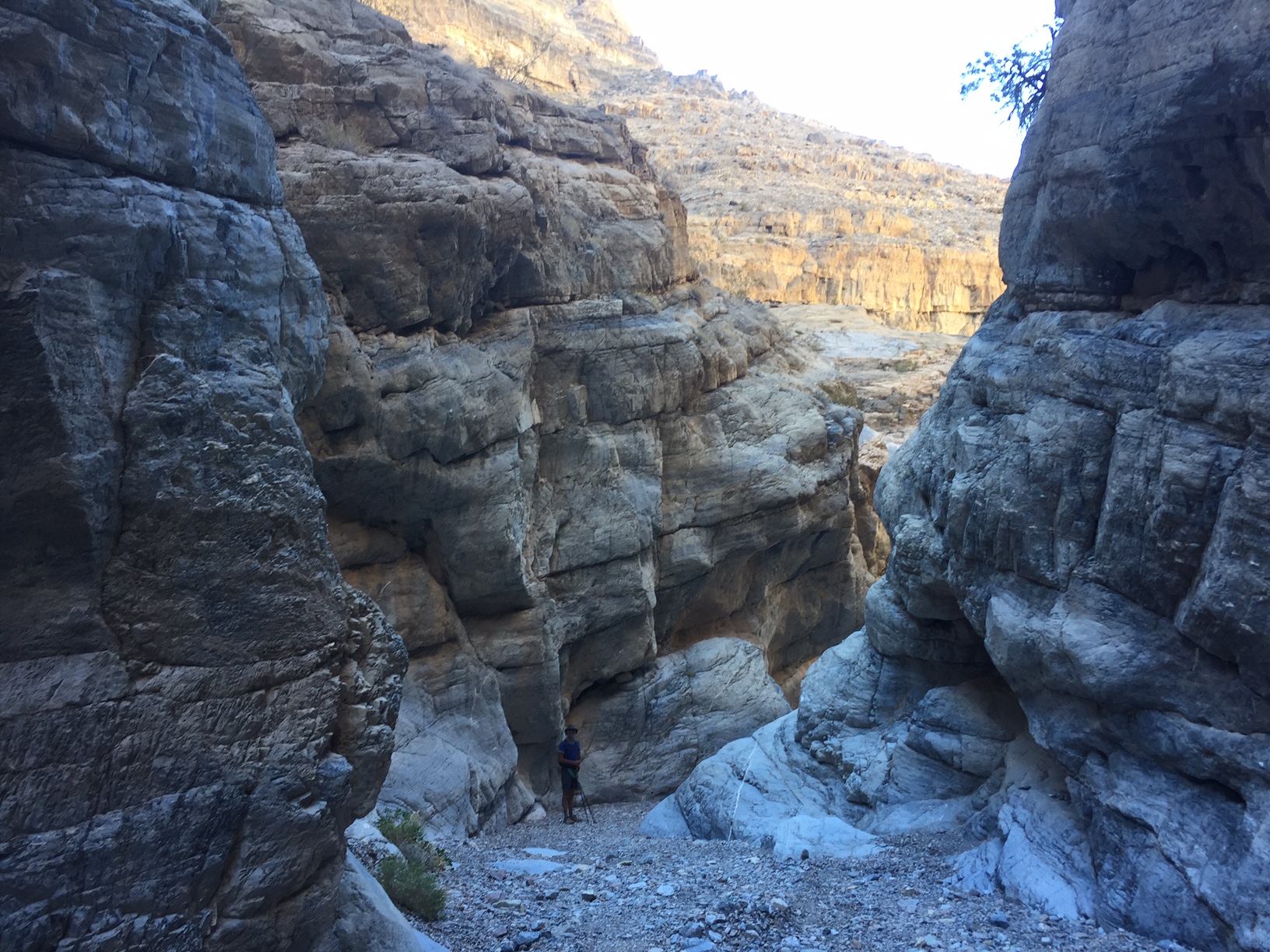We left Joshua Tree National Park for Death Valley with a sense of excitement and adventure. I vividly remembered a 2007 conversation in which a friend told me that Death Valley was one of her favorite national parks. “What??!!” I was astonished. More recently, we heard about others similarly saying that Death Valley was their favorite of all the national parks. Better than Glacier? Yosemite? The Tetons? Hard to believe.
I’ve tried to unpack my ideas about Death Valley and where they came from. I remember feeling a wave of utter terror pass through me in hearing the words DEATH VALLEY as a child. Of course, someplace with a name like that would be the very last place you’d want to visit. My abiding images of the place were of an endless landscape of sand dunes and barren, cracked dry landscape, with no vegetation whatsoever. Those who dared to visit Death Valley would inevitably find themselves stranded somewhere, utterly lost, crawling on the ground helplessly groaning, “water….water….” Scary stuff.

So, we were anxious to visit this mysterious place for ourselves.
First some facts: Death Valley is the largest park in the continental U.S. At over 3 million acres, it is roughly the size of Connecticut; 91% is designated as wilderness, making it the largest area of designated national park wilderness in the contiguous United States. The lowest elevation on the continent is found in Death Valley—282 feet below sea level—bounded by a mountain range with a peak rising more than 11,000 feet.
Occupying an interface zone between the Great Basin and Mojave deserts, Death Valley is North America’s driest and hottest spot; on average, it receives less than two inches of rainfall a year and has a record high of 134°F. You would NOT want to visit Death Valley in summer! For us, mid-November temperatures were perfect. We enjoyed warm sunny days, and the evenings were cool enough for a campfire.
What surprised me most was the wide variety of landscapes found in the park, and the amazing colors. Yes, there are sections of the park that are covered in sand dunes, but there are vast areas of colorful mountains and canyons—proof of rushing water. There are volcano craters, basins and valleys, and vast fields of salt deposits. Prospectors came here the 1800s and found not gold or silver but borax. Although much of the park has very little vegetation, wild grasses and wildflowers, sagebrush and creosote eke out a hard scrabble existence in some areas, and other parts are actually forested. We heard that the heavy precipitation of the winter of 2016-2017 brought on an amazing super bloom this past spring. I would love to have seen that!
Here are the highlights of our five days in the park:
- The sweeping views we gained on a 10-mile hike along Dante’s Ridge, flanked by Badwater Basin and Greenwater Basins far below on either side. We had this hike entirely to ourselves.
- Standing on the rim of a Ubehebe, a cinder cone volcano—our second on this trip (the other one was in Lassen National Park).
- Driving through Badwater Basin and walking out on seemingly endless salt deposits at the lowest spot in the United States at 282 feet below sea level.
- Driving the Twenty-Mule Team Canyon Road—a twisty, up and down unpaved road through colorful badlands
- The 6-mile hike through colorful Falls Canyon (near Titus Canyon). Again, we had this hike all to ourselves.
- Our 8-mile hike up Wildrose Peak. Standing on the peak, we could see both the lowest (Badwater Basin to the east) and highest points in the continental U.S. (Mt Whitney, standing at 14,505 feet in the Sierra Nevada range to the west). We had a picnic at this amazing viewpoint after putting on every piece of clothing we packed along, and we were still freezing from the powerful winds.
We would have loved to visit “The Racetrack,” an area of the park with hard-baked terrain where rocks move on their own, leaving tracks behind them (nobody knows why). We were saddened and disappointed to hear while we were there that some visitors had defaced The Racetrack by driving on it and messing with the rocks. This was one of the few such tales we heard on our national park journey.
When visiting such a large park, we like to stay in more than one area of the park to make it easier to explore the different landscapes. In Death Valley, we stayed 3 nights at the centrally located Furnace Creek Campground (below sea level), and one night in Wildrose, a small camp on the western side of the park at 4,100 feet. Both had running water so we were never thirsty!
We could easily have spent another week (or more) exploring this fascinating place. If you can make it there, do it. I hope we will have a chance to go back.
Leaving Death Valley, we said goodbye to California after over a month of adventures and headed across the heart of Nevada, to Great Basin National Park, bracing ourselves for a return to cold weather. We’ll tell you about that trip in our next installment!




What a treasure to see the lowest and hightest place in the continental US at the same time! We will be there one day, all bundled up!
One of our favorites also! We visited several times when we lived in California, and loved it so much that we took our kids to see it a few years ago, along with Joshua Tree. Deserts are fascinating places, very otherworldly!
I want to go there!!!
Happy thanksgiving.
We will be back in Durango on Dec 4, Should you be passing nearby, would be happy to see you or host you.
Still enjoying reading of your adventures. Happy Thanksgiving!